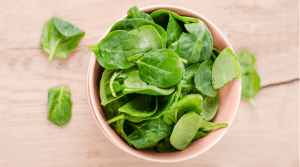Iron is an essential nutrient, meaning you must get it from food. Luckily, there are plenty of good foods with iron to help you meet your daily needs.
Iron is a mineral that serves several important functions, its main one being to carry oxygen throughout your body as a part of red blood cells.
The Daily Value (DV) for iron is 8-18 mg for non-pregnant adults. A deficiency can occur if your intake is too low to replace the amount you lose daily.
Interestingly, the amount of iron your body absorbs is partly based on how much you have stored.
Iron deficiency can cause anemia and lead to symptoms like fatigue. Menstruating women who don’t consume iron-rich foods are at a particularly high risk of deficiency.
Here are 12 healthy foods that are high in iron.

1. Shellfish
Shellfish is tasty and nutritious. All shellfish is high in iron, but clams, oysters, and mussels are particularly good sources.
For instance, a 3.5-ounce (100-gram) serving of clams may contain up to 3 mg of iron, which is 17% of the DV.
However, the iron content of clams is highly variable, and some types may contain much lower amounts.
The iron in shellfish is heme iron, which your body absorbs more easily than the non-heme iron found in plants.
A 3.5-ounce serving of clams also provides 26 grams of protein, 24% of the DV for vitamin C, and a whopping 4,125% of the DV for vitamin B12.
In fact, shellfish are a good source of omega-3 fatty acids which have been shown to increase the levels of heart-healthy HDL cholesterol.
Although there are legitimate concerns about mercury and toxins in certain types of fish and shellfish, the benefits of consuming seafood far outweigh the risks.
The EPA and FDA recommend eating 2 to 3 servings of seafood a week from their “Best Choices” list, which includes such shellfish as clams, oysters, and scallops.
2. Spinach

Spinach provides many health benefits but very few calories.
About 3.5 ounces (100 grams) of raw spinach contain 2.7 mg of iron, or 15% of the DV.
Although this is non-heme iron, which isn’t absorbed very well, spinach is also rich in vitamin C. This is important since vitamin C significantly boosts iron absorption.
Spinach is also rich in antioxidants called carotenoids, which may reduce your risk of cancer, decrease inflammation, and protect your eyes from disease.
Consuming spinach and other leafy greens with fat helps your body absorb the carotenoids, so make sure to eat a healthy fat like olive oil with your spinach.
